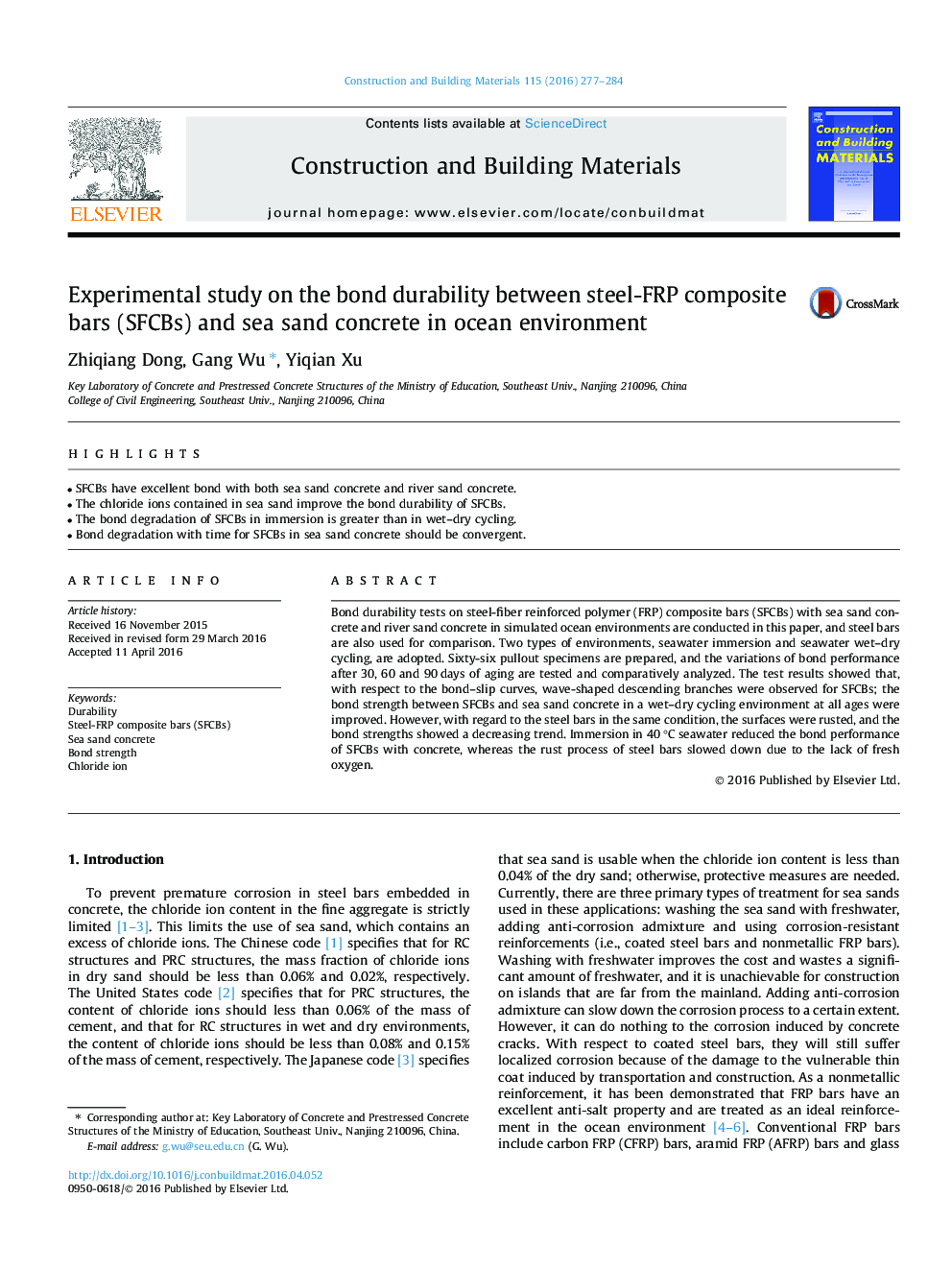| Article ID | Journal | Published Year | Pages | File Type |
|---|---|---|---|---|
| 6718894 | Construction and Building Materials | 2016 | 8 Pages |
Abstract
Bond durability tests on steel-fiber reinforced polymer (FRP) composite bars (SFCBs) with sea sand concrete and river sand concrete in simulated ocean environments are conducted in this paper, and steel bars are also used for comparison. Two types of environments, seawater immersion and seawater wet-dry cycling, are adopted. Sixty-six pullout specimens are prepared, and the variations of bond performance after 30, 60 and 90 days of aging are tested and comparatively analyzed. The test results showed that, with respect to the bond-slip curves, wave-shaped descending branches were observed for SFCBs; the bond strength between SFCBs and sea sand concrete in a wet-dry cycling environment at all ages were improved. However, with regard to the steel bars in the same condition, the surfaces were rusted, and the bond strengths showed a decreasing trend. Immersion in 40 °C seawater reduced the bond performance of SFCBs with concrete, whereas the rust process of steel bars slowed down due to the lack of fresh oxygen.
Keywords
Related Topics
Physical Sciences and Engineering
Engineering
Civil and Structural Engineering
Authors
Zhiqiang Dong, Gang Wu, Yiqian Xu,
